Reviews
The Seven Brothers Meet Dracula
Roy Ward Baker
Hong Kong / UK, 1974
Credits
Review by Leo Goldsmith
Posted on 22 October 2007
Source
Categories 31 Days of Horror
I need your vile image!
Vampirism is of central importance to horror not only because of its long standing in the genre, but also because in many ways it is a metaphor for it. The subject matter of horror movies so often deals with the undead, and horror movies themselves are constantly performing resurrections—of dead characters, moribund franchises, and murdered cinematic scare tactics. “Fresh blood” is as necessary for the revival of the horror genre as it is for the vampire, and horror filmmakers are persistently preying on other unsuspecting genres, talent, and tricks in order to reawaken tired formulas from the grave of B-movie cliché.
The Legend of the 7 Golden Vampires is a rich instance of this in horror movie history, as it attempted to drag not only Dracula and his genre from his tomb once more, but also the studio that had been trading on his name since the 1950s. By the mid-1970s, Hammer Studios seemed to be producing films on auto-pilot, turning out Christopher Lee/Peter Cushing Dracula pictures and On the Buses romps with a distinctly perfunctory air. The few islands of quality, like Captain Kronos: Vampire Hunter, are surrounded by great seas of unrestrained camp in the form of films like Dracula A.D. 1972, in which Johnny Alucard (get it?) invites Lee’s Dracula to prey on hippies in contemporary London. Noting the success of 1973’s Enter the Dragon, starring one Bruce Lee (no relation), Hammer began salivating for a taste of the kung-fu craze, and Hong Kong’s Shaw Brothers, wishing to expand further into the Western market, obliged them with a three-picture co-production deal. This somewhat ham-fisted venture didn’t quite prove to be the major boon that was expected, however—only two of these films were made (Legend and an action film called Shatter) and Hammer soon stopped production altogether. But it did inspire Shaw to start producing horror films, a hitherto quite rare genre in Hong Kong. And, in Legend, it produced one awkward, often silly, rather perverse, but always fascinating horror film.
Even if it is by any estimation little more than a cheesy movie, the strange Hammer/Shaw hybridization that is The Legend of the 7 Golden Vampires offers an unique object lesson in confused cross-cultural perceptions of East and West and even a kind of odd early model of an increasingly globalized film industry. This may seem a strong claim to make for a film so badly written that even poor Christopher Lee declined to appear in it, but the film’s weaknesses perhaps reveal more interesting things about transnational film production and Occident-Orient relations than its strengths. Indeed, the very plot of the film is inscribed with the strange circumstance of its making with its depiction of the pale, blood-sucking European count taking on the “vile image” of the Chinese in order to “walk this earth again—freed from these walls; freed from this mausoleum!” The film’s prologue, in which Dracula receives a house-call from evil high priest Kah and decides to steal his “form” in order to live again and avenge himself on mankind, is comically close to Hammer’s own orientalist opportunism, taking on Shaw’s patina of kung-fu cool in order to suck the life out of another genre and, hopefully, to live again.
That this didn’t quite work out for Hammer is probably more due to their own moribund modes of production and a lack of care and variation in their own work, making this furtive attempt at transnational expansion seem too little, too late. In contrast, however, the Shaw Brothers had been breaking into foreign markets through co-productions since at least the mid-1960s, routinely making films with studios from Thailand, Singapore, and elsewhere in East Asia. With South Korea’s Shin Films, they co-produced a number of films, including 1964’s The Last Woman of Shang and Shin Sang-Ok’s 1967 film, The Goddess of Mercy, often shooting films simultaneously in different languages with different casts. In the 1970s, they worked on various films with Italian and Australian studios, and, following Enter the Dragon’s success, their effort to move westward included not only the deal with Hammer, but also one with Warner Brothers which yielded Cleopatra Jones and the Casino of Gold. Talent also crossed seas routinely—the Shaws imported and exported directors and stars all over the region (the most entertaining example of which is Inoue Umetsugu, the Japanese director of the flashy, vastly entertaining musical, Hong Kong Nocturne, who made some seventeen films in six years). Just as Kah makes the long trek westward to summon Dracula from his grave to reawaken his seven Golden Vampires, it was Shaw whose great effort paid off.
This makes Legend even stranger, however, as it seems very much more a Hammer than a Shaw film, and a good deal more Western than Eastern. Shot largely at Shaw’s studio under the direction of Hammer regular Roy Ward Baker, the film boasts a few exotic locations and some good performances by Hong Kong actors like David Chiang (from The One-Armed Swordsman, et al) and Shen Chan. But the script is clearly Hammer’s work, and among other oddities it labors awkwardly to translate Hammer’s muddled version of Stoker’s most famous sub-species to an Asian context. Of course, Chinese culture doesn’t really have as entrenched an equivalent to Europe’s vampires, so between Don Houghton’s screenplay and Johnson Tsau’s art direction, there is quite a bit of obvious guesswork. As Van Helsing (portrayed again by the long-suffering Peter Cushing) is pleased to discover, the Golden Vampires are understandably put off by the image of Buddha just as European vampires dislike crucifixes, and rather handily, they can be killed with a stab to the heart from a silver sword, of which there seem to be plenty on hand.
What is perhaps strangest about the film, given its production history, is how blithely it trades on well-worn stereotypes about Asians and their exotic savagery. The prologue and credits out of the way, the opening of the film proper features a standard establishing montage of Chung King in 1904, with a market scene to which the Shaws’ studio has lent some cultural and linguistic authenticity. Then, from nowhere, there is a nice closeup of a cleaver hacking up a frog at a food stall, much to the delectation of one of the patrons. The period and cultural details are impressive, but the perspective is clearly that of the Western tourist entering alien territory, a fantastical colonial wonderland where customs are barbaric, people eat disgusting things, and you can’t get a decent cup of tea. There is much in the film that balances this out, of course—when Van Helsing, on a kind of lecture tour visiting Chung King University to talk about vampires, is summarily poo-pooed by his erudite Chinese colleagues, we sense a somewhat backhanded compliment to the strength of Chinese scholarship. But it is clear that the Chinese filmmakers involved are willing to put up with or even complicit with a certain amount of orientalism in this international collaboration. And even though there are two interracial romances in the film, the only pair to survive is the white man-Asian woman combination. Both members of the Asian man-white woman pairing get it in the neck.
But again, even if the film’s values favor the Europeans, most of what works in the film largely favors the Asian participants. Once Van Helsing (with his fey hipster son, Leyland, and Julie Ege’s bosomy Swedish heiress named Vanessa Buren) heads off to the village of Ping Kwei in Szechuan Province to fight the Golden Vampires with a host of daredevil, kung-fu-adept Chinese siblings, the film largely functions to show off the Shaw studio’s fight choreography. Roy Ward Baker seems to have balked at this - “The Shaw Brothers told me that they wanted their own director to shoot all the Kung Fu scenes ‘because we do it a certain way.’ I said, ‘That’s all well and good, but I’m the director and I’ve got a little experience in action, thank you.’” - but what results is clearly far beyond Baker’s action-directing abilities. Many of the best horror sequences seem to be thanks to Shaw’s unit as well, with pointy-toothed and gold-masked vampires storming Ping Kwei with their army of dead, tearing the top off every girl in sight. Back in their temple, it’s all blood and bare breasts, with a circle of seven slabs, each one with a half-naked Chinese woman shackled to it, and a bubbling caldron of their blood in the center. Whatever its obvious weaknesses as a film and its patently ludicrous elements, it is just this kind of macabre image that inspired the Shaws to continue reviving horror on their own, leaving Hammer to return to its musty mausoleum and remain there undisturbed.
More 31 Days of Horror
-

Alien
1979 -
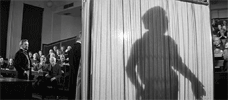
The Elephant Man
1980 -
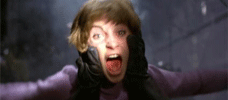
My Bloody Valentine
1981 -
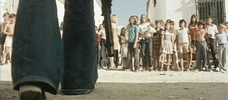
Who Can Kill a Child?
1976 -

Cannibal Holocaust
1980 -
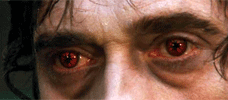
Let Sleeping Corpses Lie
1974 -

John Carpenter’s Vampires
1998 -

Jaws 2
1978 -

A Warning to the Curious
1972 -

Wolf
1994 -
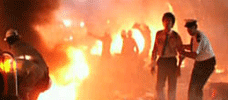
The Survivor
1981 -
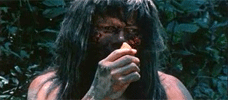
Cannibal Ferox
1981 -
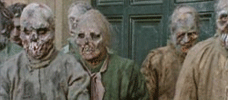
The Nights of Terror
1981 -
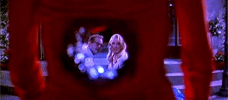
Death Becomes Her
1992 -
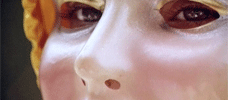
Alice, Sweet Alice
1976 -

Body Double
1984 -
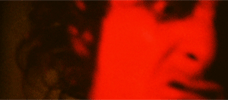
Invocation of My Demon Brother
1969 -
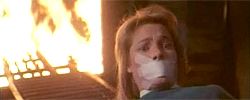
Phantasm II
1988 -
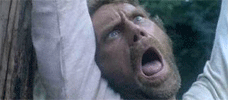
Emanuelle and the Last Cannibals
1977 -

The Wicker Man
1973 -
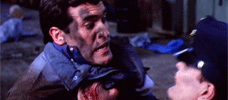
Maniac Cop
1988 -
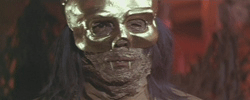
The Legend of the 7 Golden Vampires
1974 -
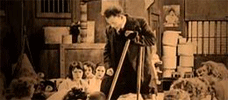
The Penalty
1920 -
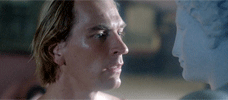
Boxing Helena
1993 -

Chew on This
2005 -

Night of the Creeps
1986 -

Night of the Lepus
1972 -
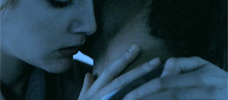
Near Dark
1987 -

Army of Darkness
1992 -
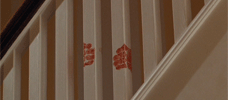
The Brood
1979 -

The Lift
1983 -

Amsterdamned
1988 -
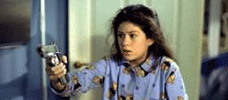
Silent Witness
1999 -

The Shaft
2001
We don’t do comments anymore, but you may contact us here or find us on Twitter or Facebook.



